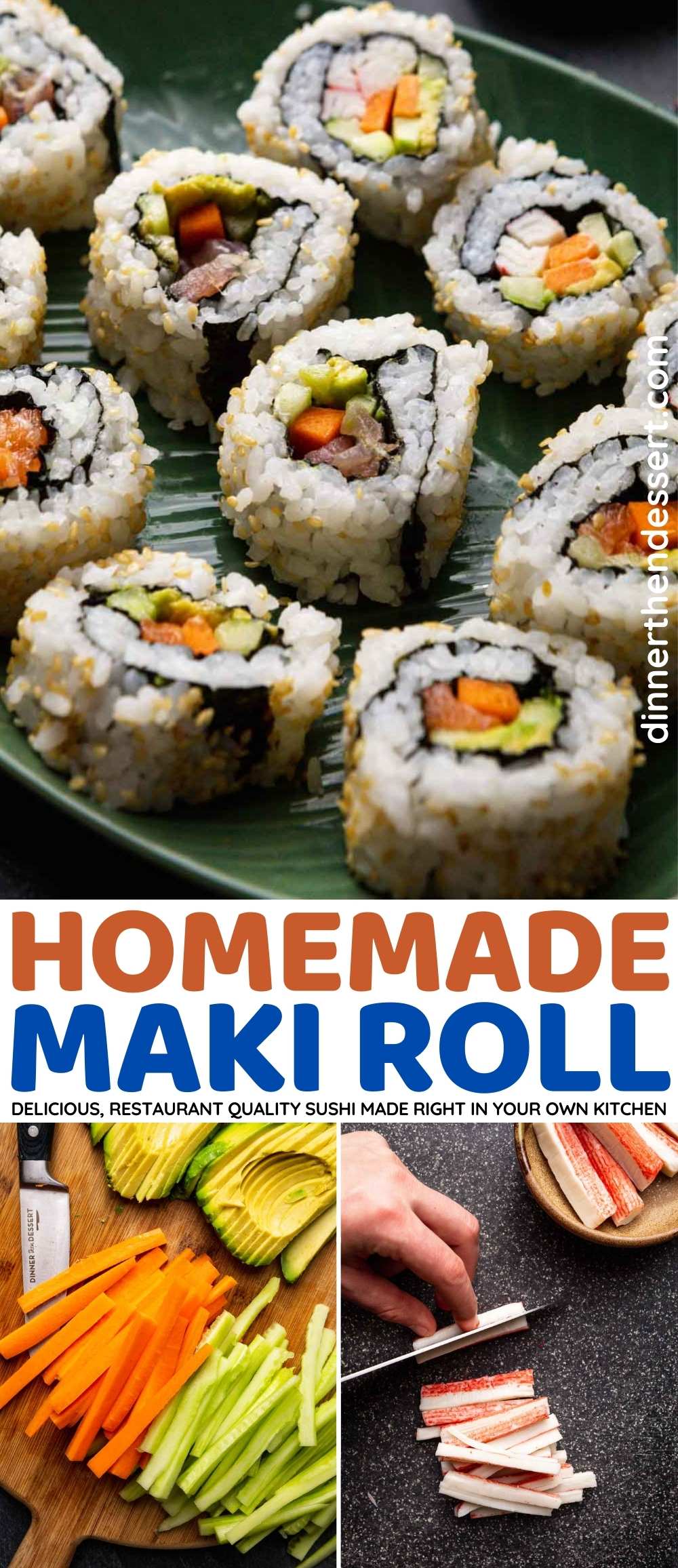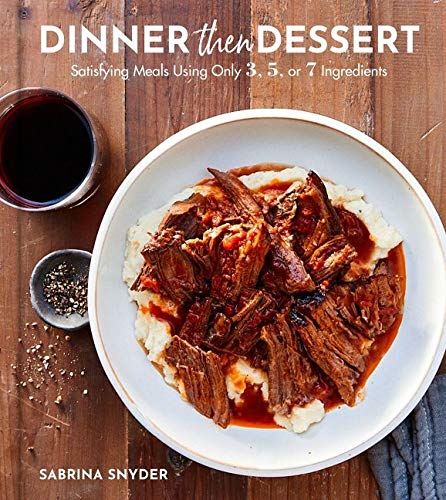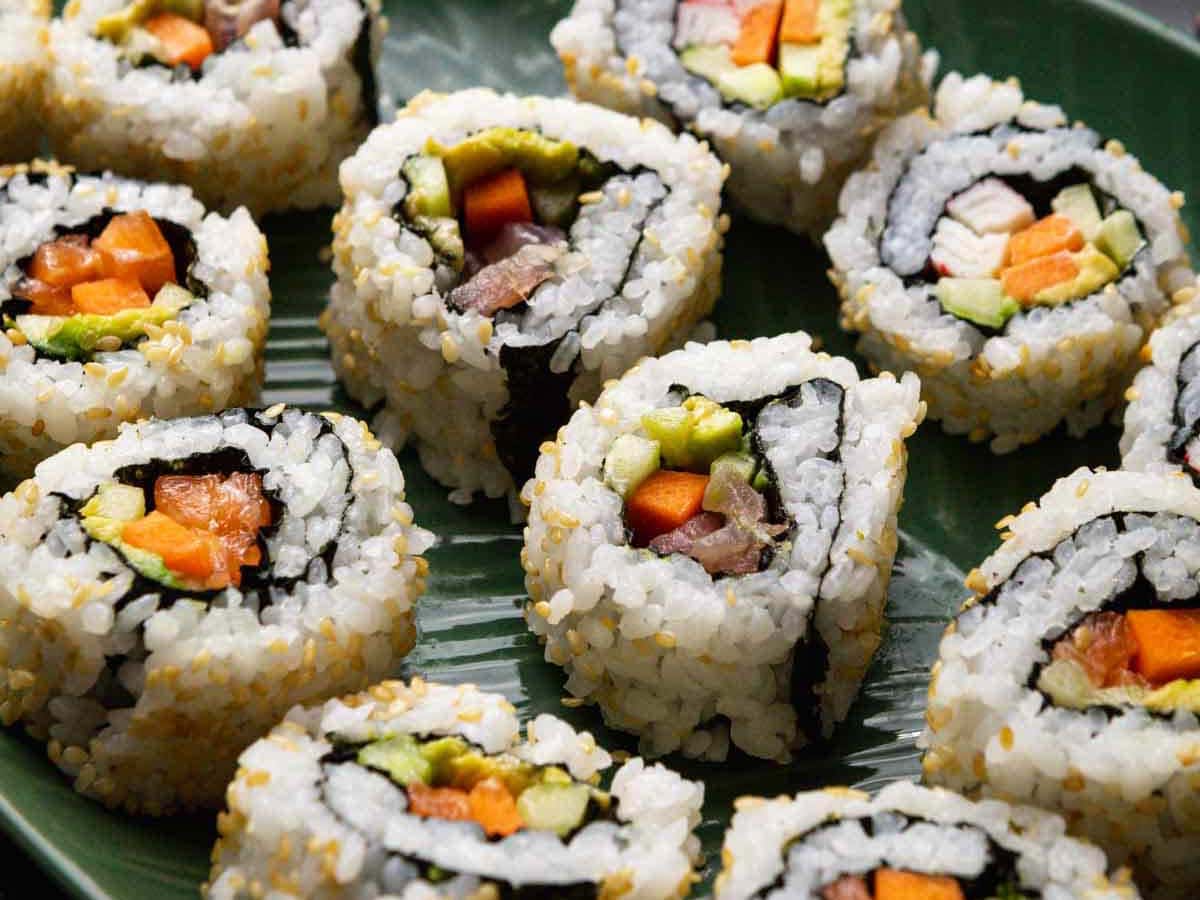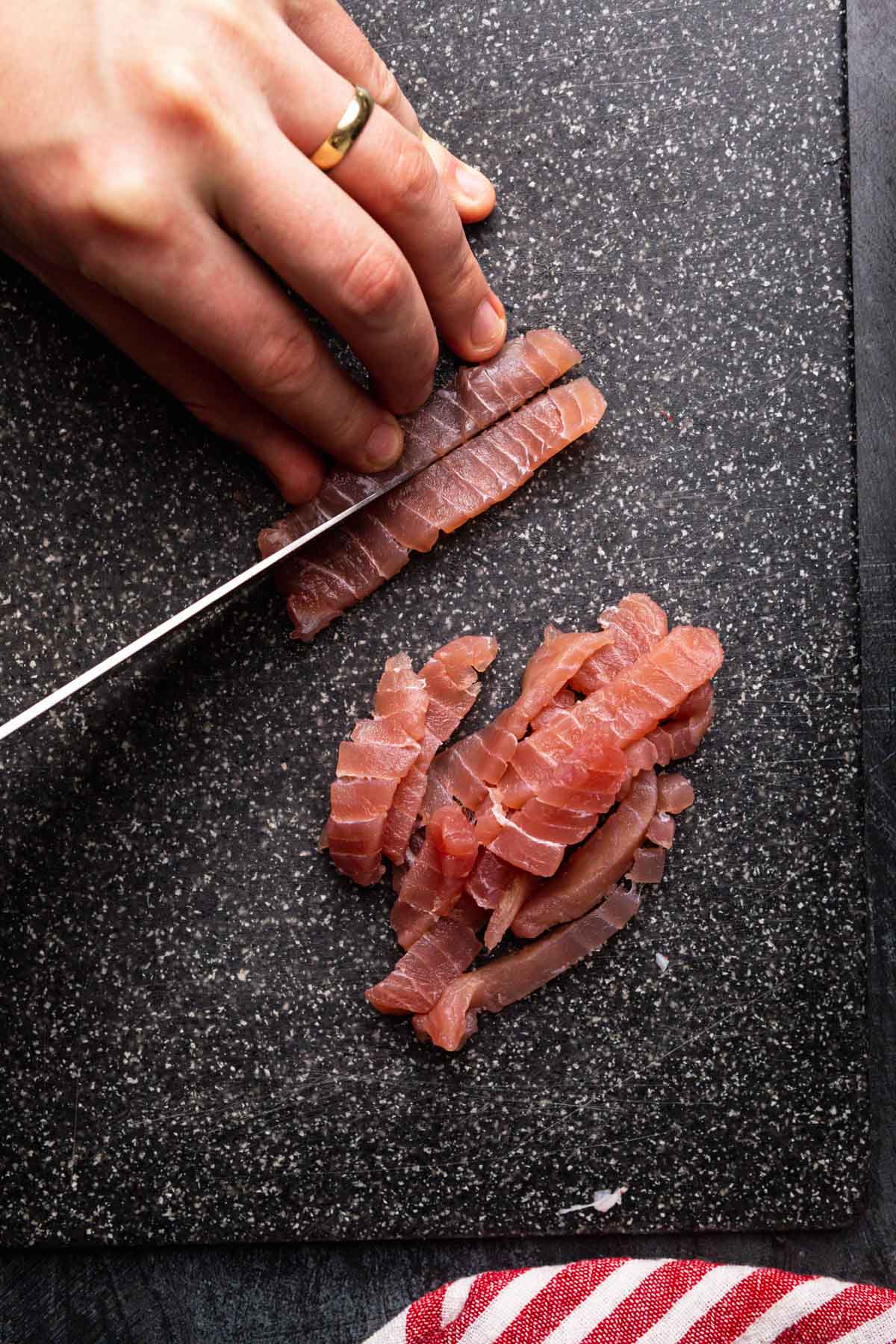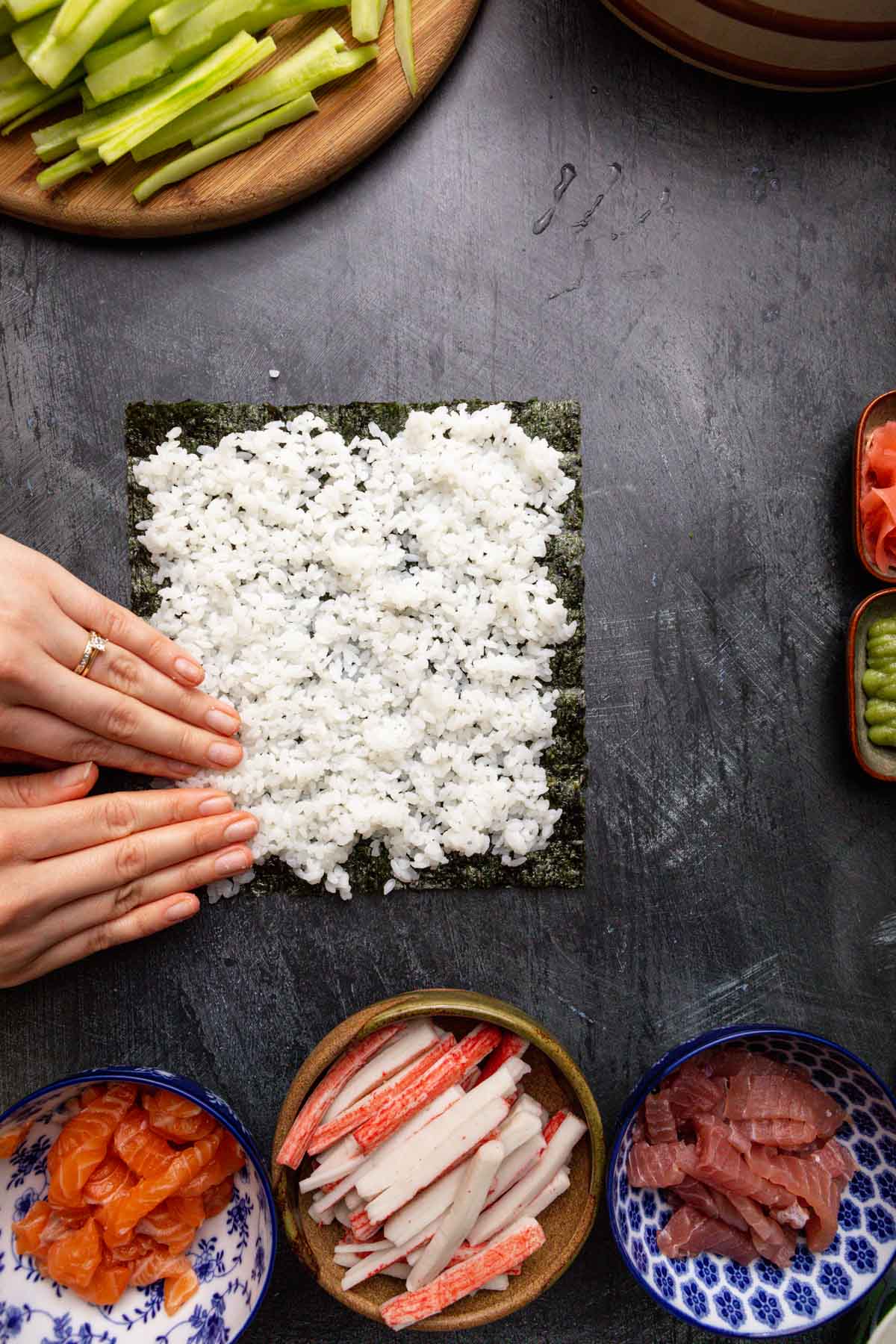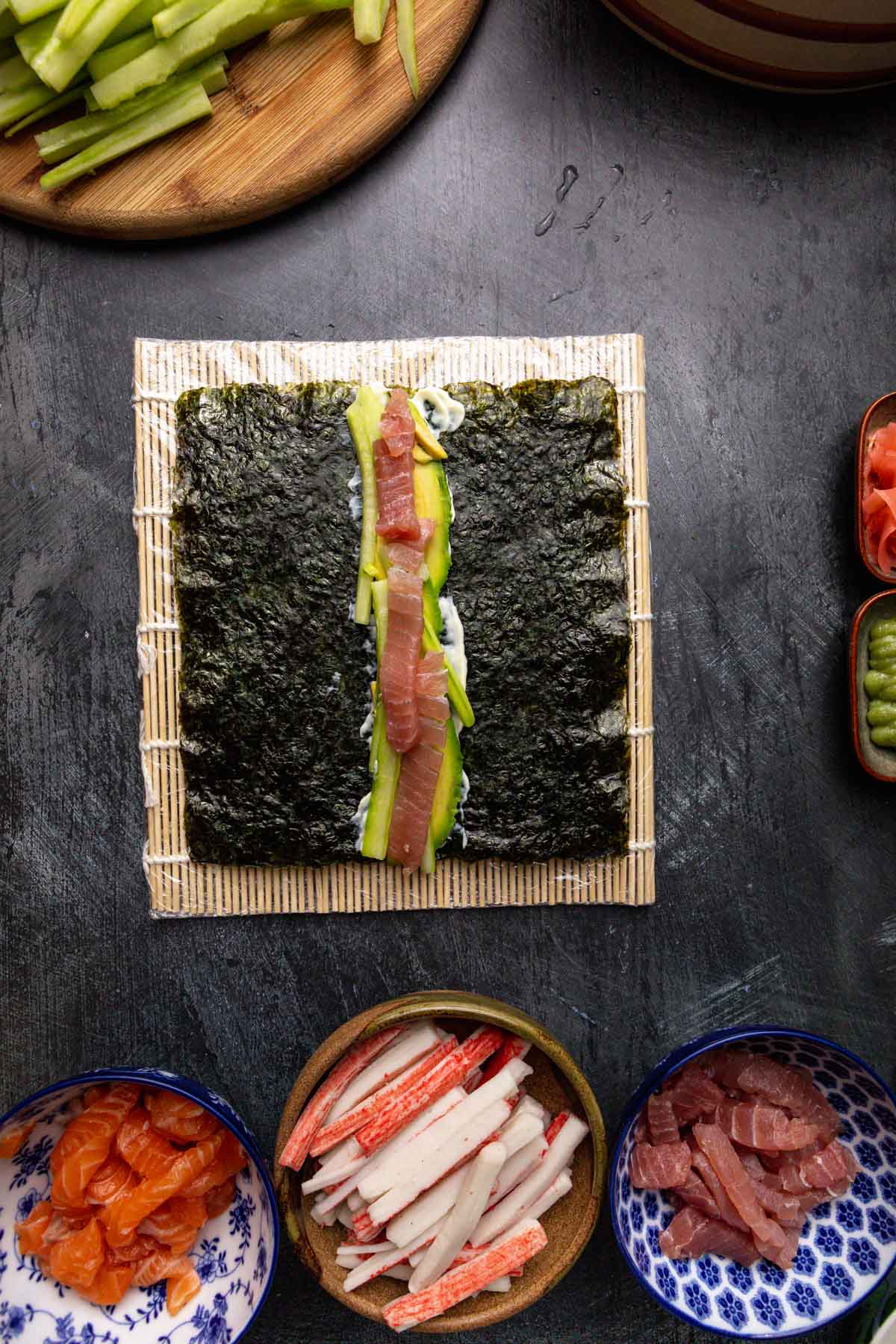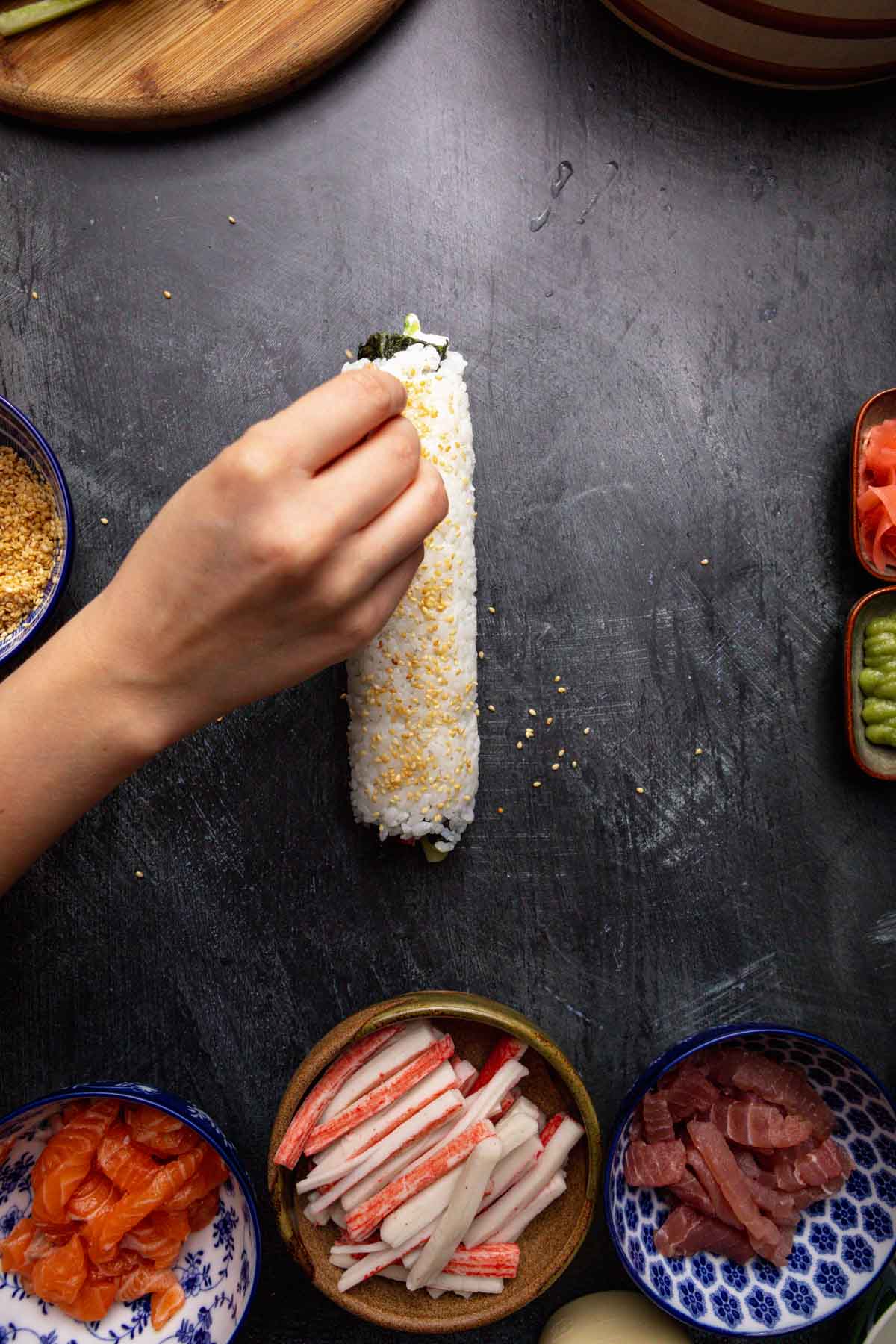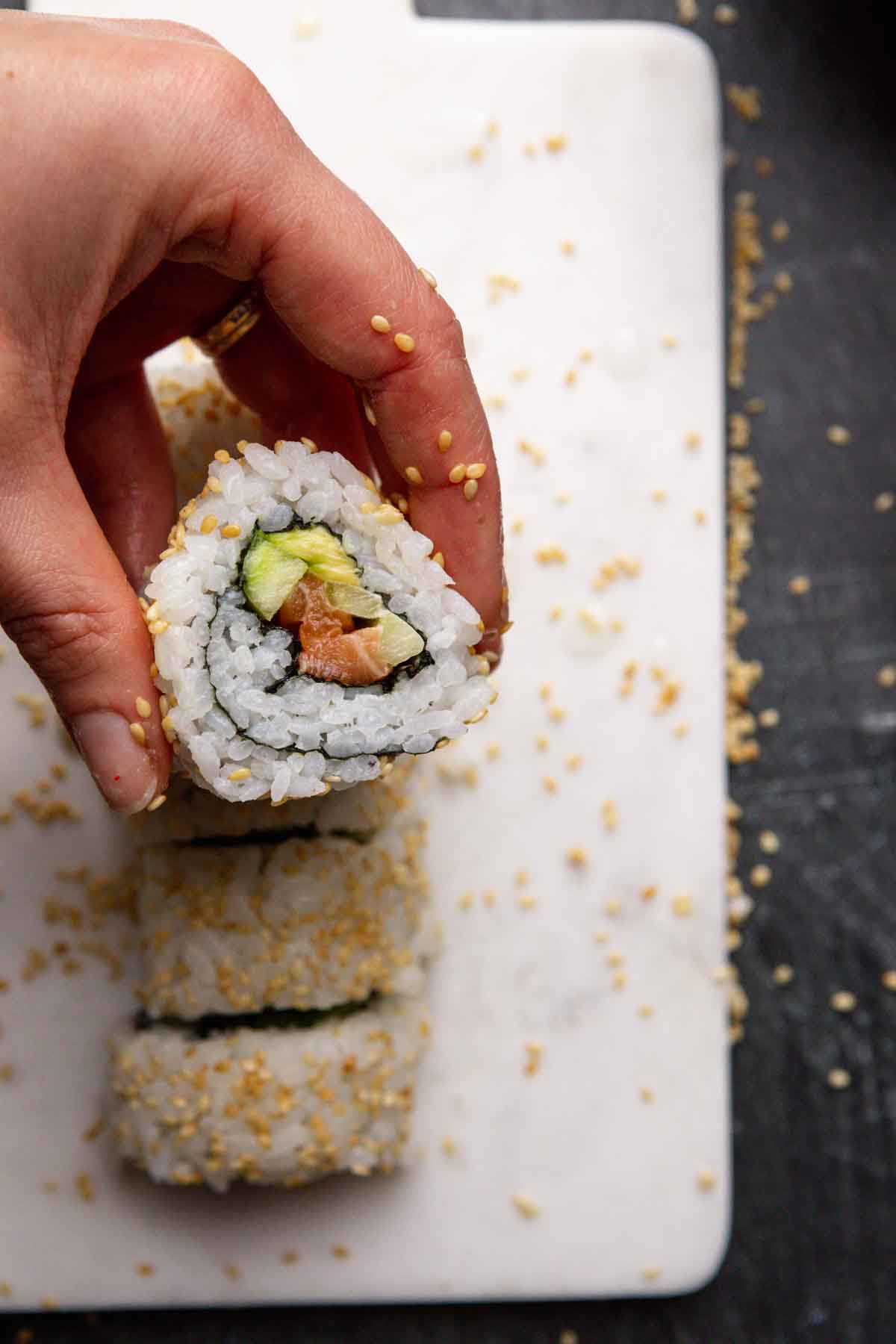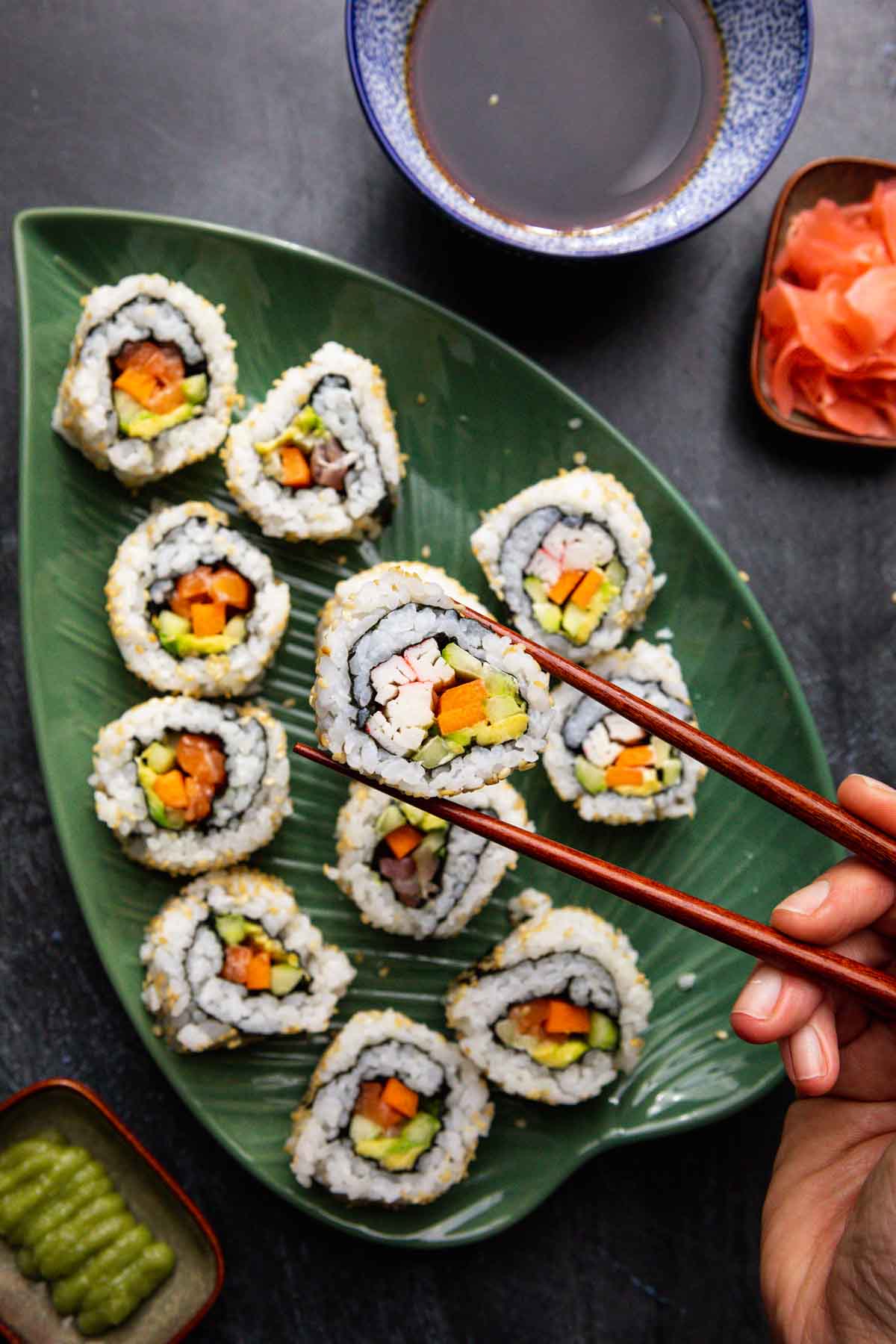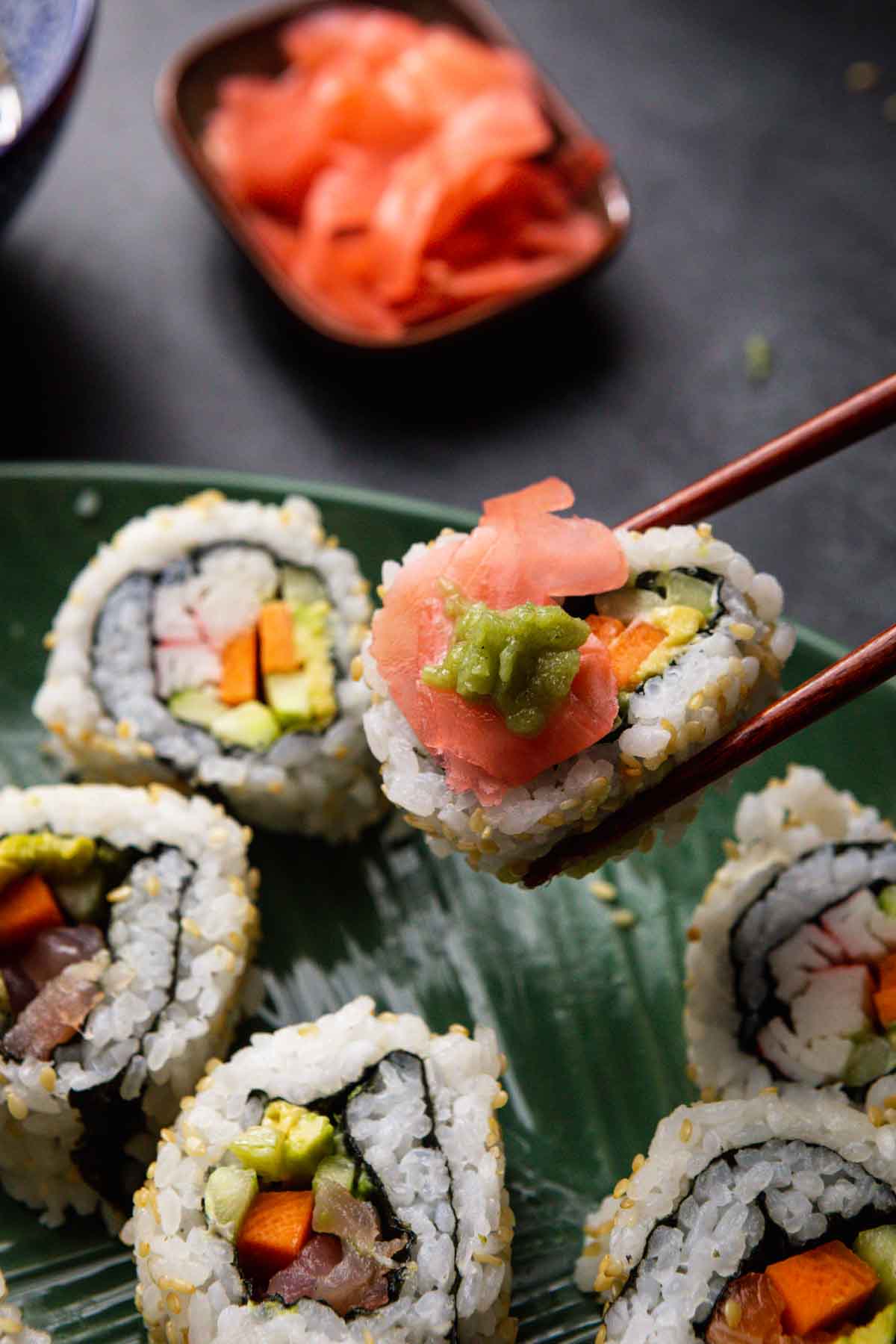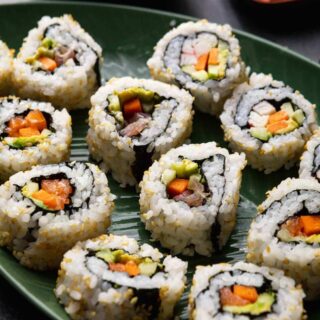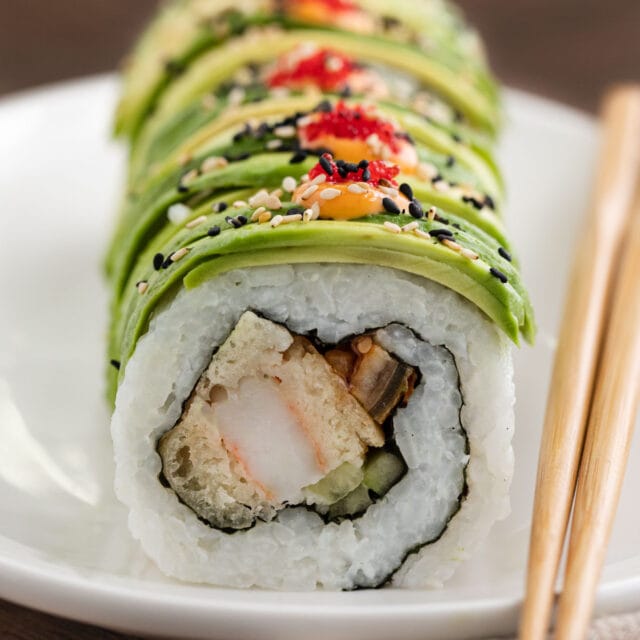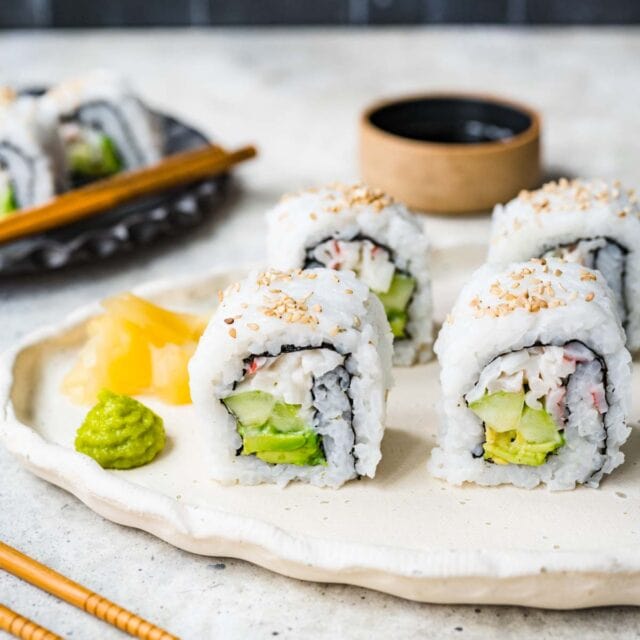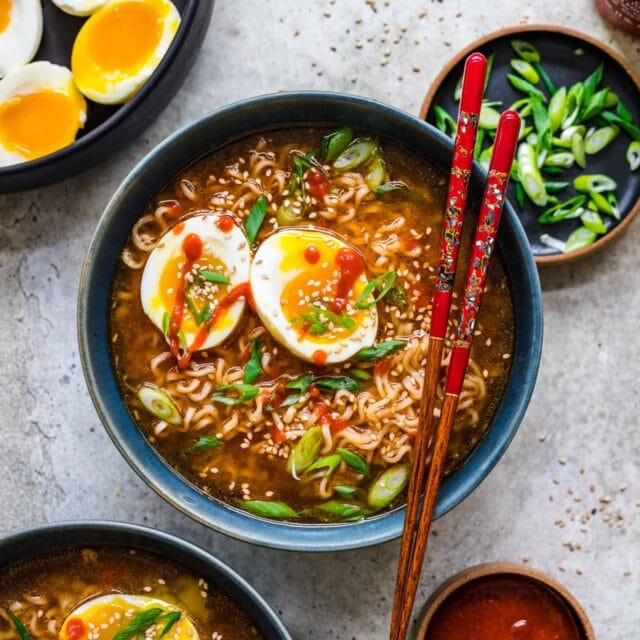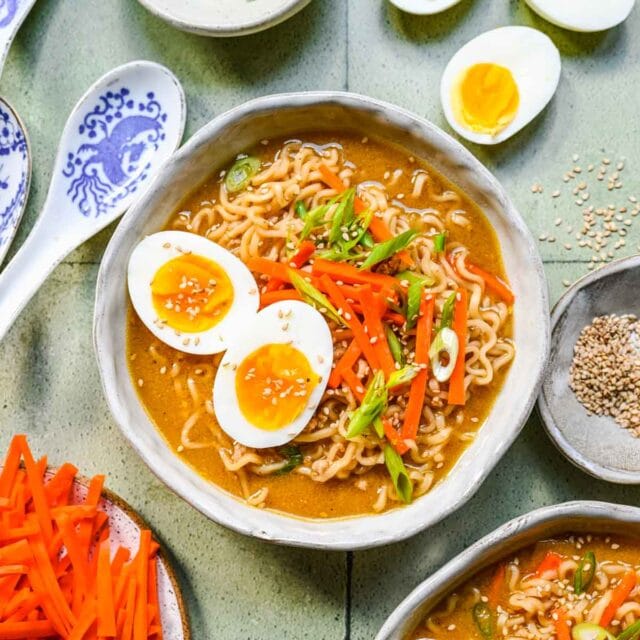This Maki Roll makes homemade sushi easy by combining crab, tuna, salmon, and other favorite sushi fillings in a rice and seaweed roll.
Going out to sushi restaurants for Dinner is always a fun time but it can be pricey. With our recipes like Dragon Rolls, California Rolls and Maki Rolls, you can make delicious sushi rolls at home for a lot less. They’re surprisingly easy to make with the right tools and ingredients.
Table of contents
Sabrina’s Maki Rolls Recipe
Making sushi can be intimidating at first, but there’s no need to go out to sushi restaurants every time you crave this delicious Japanese cuisine. Maki Sushi comes together easily with a few assorted ingredients. To make a regular Maki Roll, you’ll need rice, nori (or seaweed), and of course, your choice of sushi fillings. You can find everything you need at your local supermarket or Asian grocery store.
Maki Rolls also have a lot of amazing flavor possibilities. You can decide whether you want to make it with crab, tuna, or salmon. It’s also easy to customize with whatever sushi fillings you like. We’ve included a bunch of variations at the end of this post to give you some more ideas on how to fill your Maki Rolls.
Ingredients
- Sushi Rice: To prepare the perfect white rice for sushi, first just cook short-grain white rice in water according to the instructions. Then add seasoned rice vinegar, white sugar, and salt for flavor. You want to give the vinegared rice time to cool so that it has the right texture when you add it to the Maki Roll.
- Fish: There are a few different options for what kind of seafood you want in the Maki Roll. Use tuna, salmon, crab stick, or genuine cooked crab, depending on your taste. Keep in mind that because sushi is generally made with raw fish, you need much better quality fish than anything you’d get from canned tuna or anything like that. You want sushi-grade o sashimi-grade raw fish. This label lets you know that the seafood is fresh and high enough quality to eat raw. If you don’t enjoy raw fish, one of the perks of making your own sushi is that you could always use cooked fish instead.
- Nori: Nori is dry seaweed in thin sheets. You’ll need 5 sheets to wrap the sushi roll completely.
- More Fillings: For extra flavor and color, add thinly sliced, fresh avocado, English cucumber, and a julienned carrot to the center of the Maki Roll. To prepare the cucumber for sushi, make sure it’s deseeded and cut into cucumber strips.
Kitchen Tools & Equipment
- Sushi Mat: The sushi mat is an important tool specially designed to roll and shape sushi. It has long thin wooden rods (usually bamboo) that apply even pressure without squishing the ingredients.
- Plastic Wrap: The plastic wrap is key to keeping the sushi rice from sticking to your sushi mat and your roll from falling apart.
How to Make
Time needed: 50 minutes.
- Make the Sushi Rice
Before preparing the sushi roll, you need to make the rice. Add water and dry rice to a large pot over high heat, and bring it to a boil. After the water starts boiling, you can reduce the heat to medium-low and cover the pot with a lid. Simmer for 20-22 minutes until the rice is soft but not mushy and the liquid is absorbed. Then remove the rice from the pot into a large bowl. Mix together rice vinegar, sugar, and salt. Use a rice paddle or wooden spoon to cut the vinegar mixture into the rice. Make sure you don’t excessively stir the rice. Let the Sushi Rice cool for 20-30 minutes before using it.
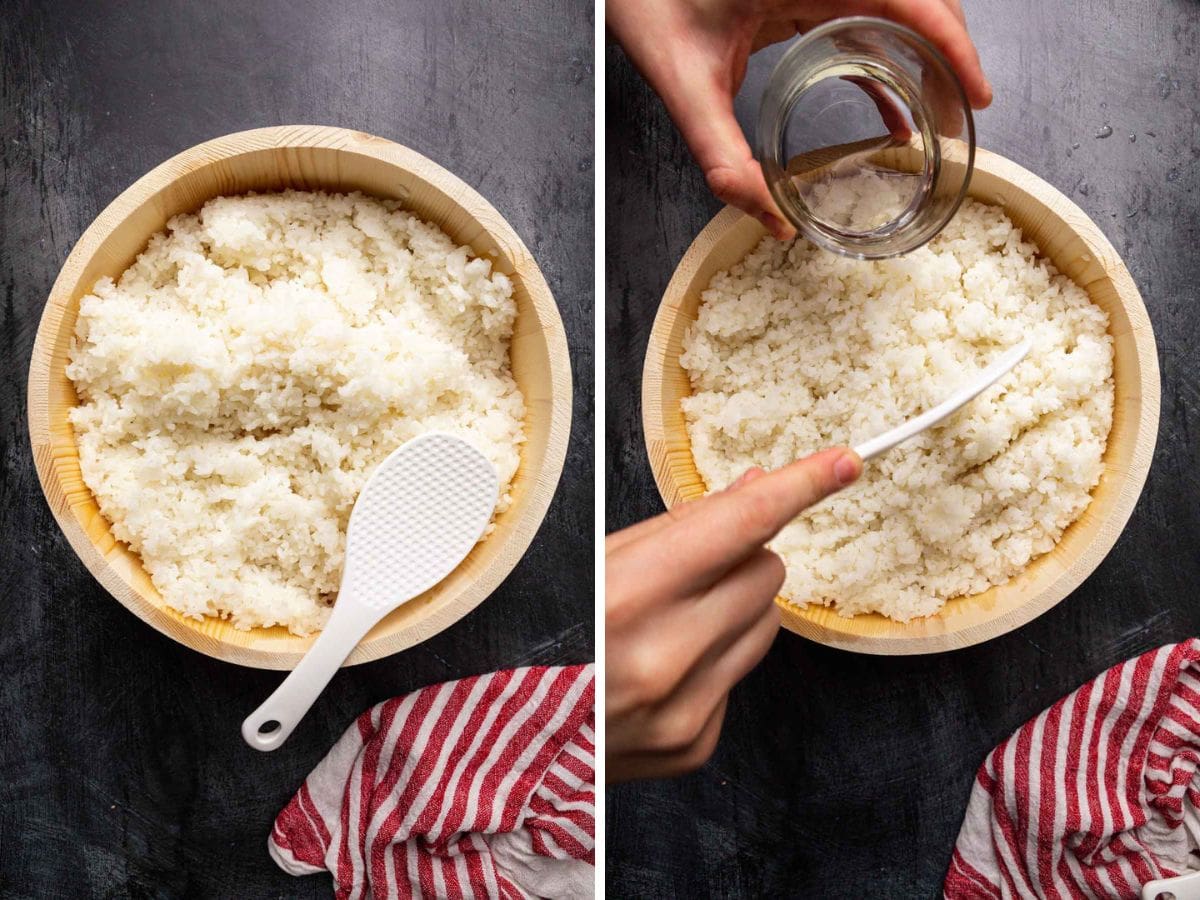
- Prep Work
Prep your bamboo mat or whatever kind of sushi mat you are using with plastic wrap, which should prevent the rice from sticking to the bamboo mat. Depending on what kind of seafood you are using, you can either leave the krab stick whole, or slice the tuna, or salmon into long strips.
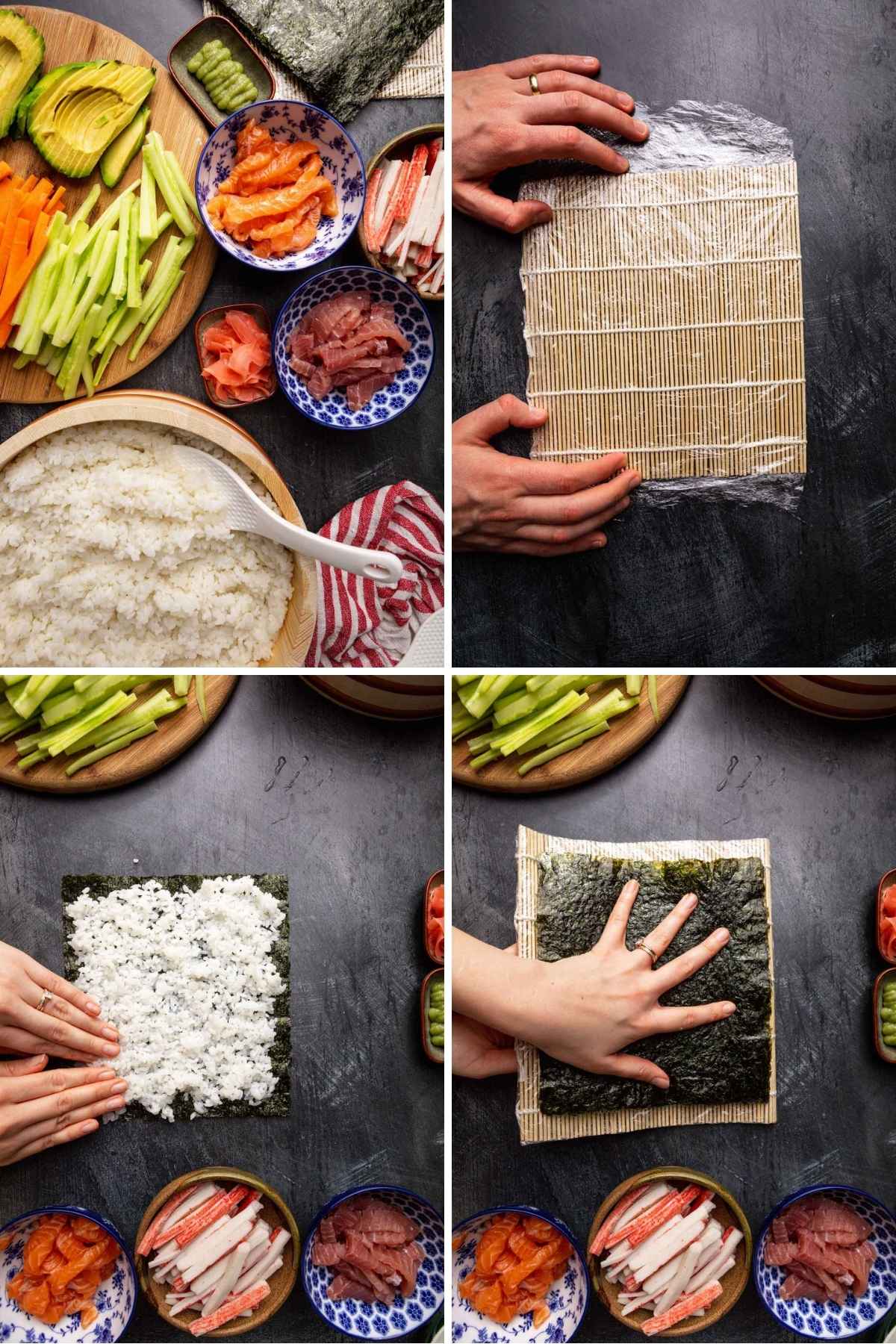
- Assemble and Roll
Lay down a sheet of nori (sheet of seaweed) on a clean work surface. Then add a thin layer of rice over the nori sheet. Carefully place the nori sheet on the rolling mat with the rice side down. Over the center of nori, add a layer of mayonnaise, thinly sliced avocado, a strip of cucumber, and ¼ of the seafood. Then roll up the Maki Roll into a tight log.
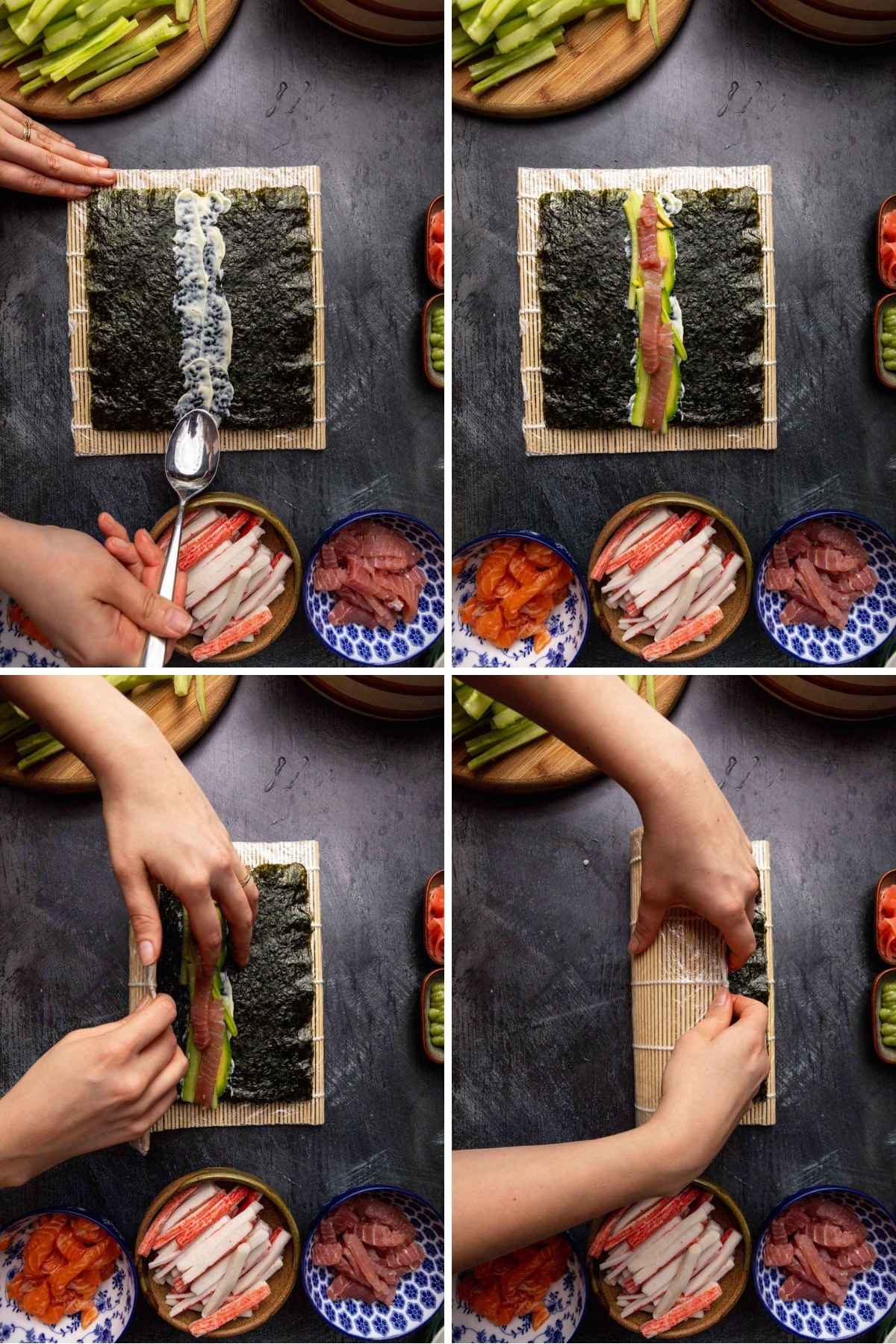
- Slice and Serve
Garnish the Maki Roll with toasted white sesame seeds if desired. Then slice the roll into 6 sushi pieces. Repeat with the rest of the ingredients, it should make about 4 logs of sushi. Serve with condiments like ginger, soy sauce, or wasabi.
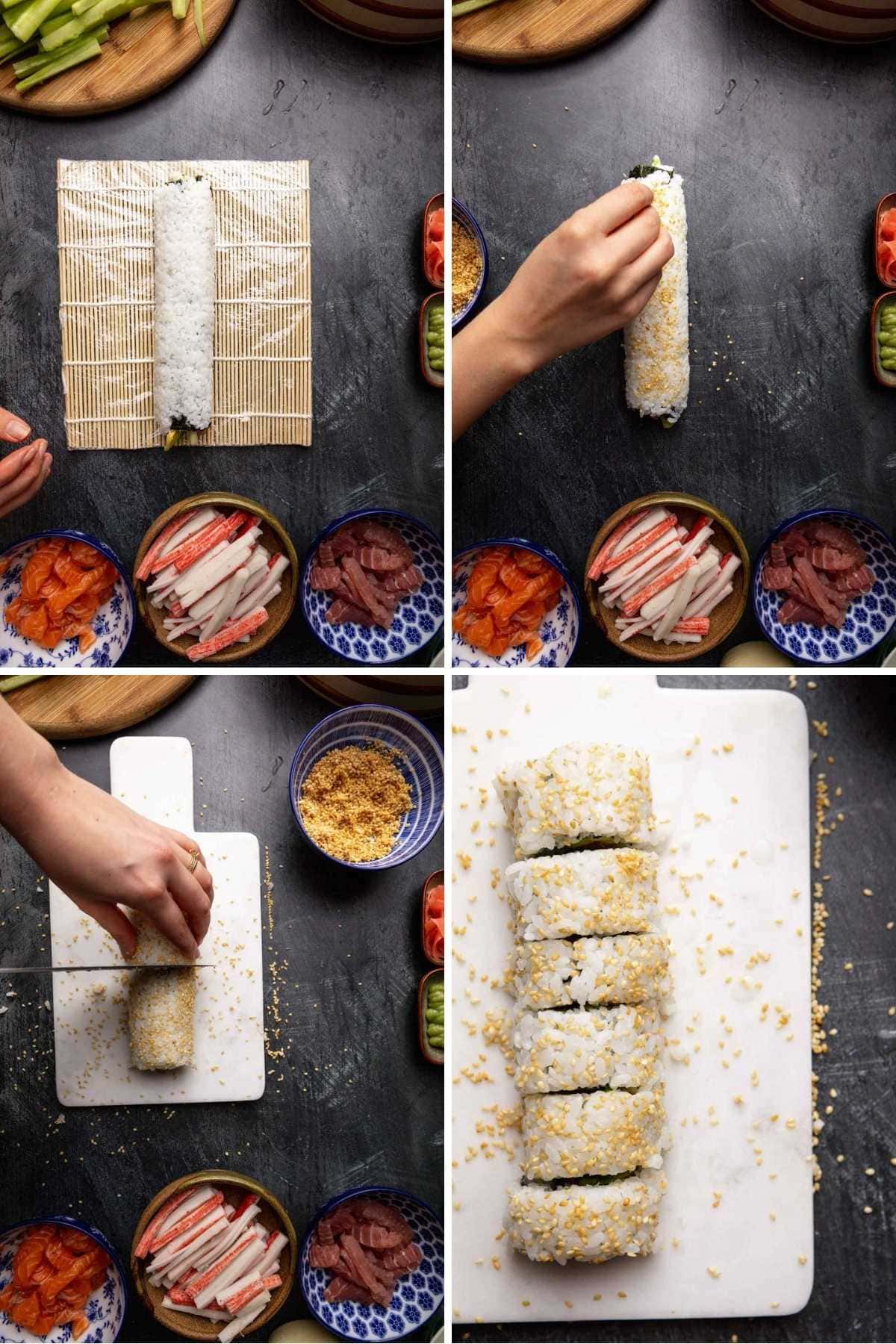
Can this be made ahead of time?
Sushi is best when you first make it because the rice will be soft and tender and the fish will be fresh. You could make the rice an hour or two ahead of time but it’s not recommended to chill it and then make the rolls because it won’t roll and stick as well.
Nutritional Facts
Tips for Making Maki Rolls
Although some sushi dishes can get more complicated, this Maki Sushi is a great place to start. It’s made with fairly common ingredients and is pretty easy to combine. There are just a few tips, like adding a plastic wrap to your sushi mat and making sure to prep authentic sushi rice, that will help you avoid easy mistakes.
Starting with simple sushi recipes like this Maki Roll will also prepare you for making different types of sushi. As you get into experimenting with different combinations of sushi fillings, you can try out other techniques, and you’ll feel like a true at-home sushi chef soon enough.
What to Pair With Maki Rolls
Once you’ve made your Maki Roll be sure to serve it with a bit of wasabi, teriyaki sauce, soy sauce, or Spicy Mayo on the side for dipping. They add more delicious flavor options and will make you feel like you’re dining out at your favorite sushi restaurant.
How to Store
Store: You don’t want to leave your Maki Roll out at room temperature for more than 2 hours at a time. If you made the sushi with raw fish, then you can store leftovers in an airtight plastic container in the fridge for 1-2 days. Sushi made with cooked fish can be stored in the fridge for 3-4 days.
Freeze: Sushi isn’t the best dish for freezing. However, if you want to, it’s best to freeze the ingredients separately to avoid the filling making the rice and nori soggy.
Frequent Questions
Sushi rice is made by preparing short-grain Japanese rice with vinegar seasoning. The vinegar adds a delicious tangy flavor that pairs nicely with traditional sushi rolls. It also helps the sticky rice clump together and sticks to the Maki Roll.
When you think of sushi, you are probably actually thinking of maki rolls which are the sliced rounds of rice wrapped around fillings like fish and veggies. Sushi is actually referring to cold rice that has been molded into bite size pieces, so it can also be sashimi, hand rolls, and all other bite sized items on a sushi menu.
Recipe Card


Ingredients
Sushi Rice:
- 4 cups water
- 2 cups uncooked white rice
- ½ cup seasoned rice vinegar
- 1 teaspoon white sugar
- 1 teaspoon salt
Maki Roll:
- 6 ounces krab meat sticks or genuine cooked crab
- 6 ounces sushi grade raw tuna
- 6 ounces sushi grade salmon
- 2 tablespoons japanese mayonnaise
- 5 sheets nori , dry seaweed
- 1 avocado , pitted and thinly sliced
- 1 English cucumber , peeled, de-seeded and cut into thin strips
- 1 carrot , julienned
- toasted white sesame seeds
To Serve:
- pickled ginger , for garnish.
- low sodium soy sauce
- wasabi paste
Instructions
Sushi Rice:
- Add water and rice to a large pot on high heat and bring water to a boil.
- Reduce heat to medium low and cover, simmering for 20-22 minutes until rice is soft and liquid is absorbed.
- Carefully transfer from pot into a large bowl.
- Mix together rice vinegar, sugar, and salt.
- Using a rice paddle or large spoon, add in the rice vinegar evenly, cutting it in (do not excessively stir).
- Let cool for 20-30 minutes before using sushi rice.
Maki Roll:
- Wrap your sushi mat in plastic wrap (this helps prevent rice from sticking).
- Depending on which seafood you are using, you can leave krab stick whole, or slice the tuna or salmon into long thin strips.
- Add a thin layer of rice evenly on the nori sheet on a clean surface.
- Put the nori sheet rice side down on the rolling mat.
- Through the middle of the roll add a thin layer of mayonnaise followed by some thinly sliced avocado, the cucumber and ¼ of the seafood.
- Using the roller, roll up the maki roll into a tight log.
- Garnish with toasted white sesame seeds if desired.
- Cut into 6 pieces and serve with ginger, soy sauce and wasabi.
- Repeat with the remaining ingredients, it should make about 4 logs of sushi.
Equipment
Nutrition
Variations
Avocado Roll: You can use this recipe to make all different types of sushi. If you don’t eat meat, a good alternative to a classic Maki Sushi that uses fish is to make an Avocado Maki Roll. You can use extra avocado sliced into larger pieces so that it better fills the Avocado Maki Roll. Add additional ingredients like carrots and cucumber strips for more flavor and texture in the Avocado Maki Roll.
Spicy Tuna Roll: To make a spicy tuna roll, you can follow the same basic tuna recipe. Prep the sushi rice and seaweed as usual. Then mix sashimi-grade raw tuna with hot sauce and green onion for tuna seasoning. Add the meat to the center of the tuna roll. Then roll the spicy tuna roll tightly. Add sesame seeds if desired and cut the spicy tuna roll into 6 pieces.
Dragon Rolls: To make a fun dragon roll, you can replace the original filling with shrimp tempura and avocado. Then top the roll with spicy mayo, unagi sauce, and toasted black sesame seeds.
Types of Seafood: Feel free to try this basic recipe with different kinds of seafood like imitation crab meat, chopped yellowtail, or eel. You can also add cooked seafood like Baked Salmon or Shrimp Tempura.
More Fillings: If you aren’t a fan of seafood, try it with Teriyaki Chicken pieces or go all veggies. Crispy tempura veggies, blanched asparagus, or water chestnuts would add some crunch. Give it a creamy center with cream cheese sliced in long planks.
Related Recipes
More Delicious Japanese Recipes
